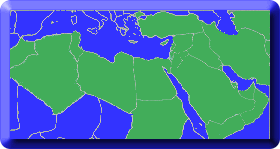
Topics in Middle Eastern and North African Economies
Document Type
Article
Publication Date
9-1-2014
Journal Title
Topics in Middle Eastern and North African Economies
Volume
16
Publisher
Middle East Economic Association and Loyola University Chicago
Abstract
The Turkish economy has been experiencing a structural transformation as a result of economic liberalization, especially after the 1990s. Liberalization and integration to the world economy have had inevitable distributional consequences. In that sense, trends in the distribution of income have received substantial attention in recent years. As income inequality becomes an important issue for developing countries, gender (in)equality in Turkey also has gained attention. There exists a vast survey in the literature about the relationship between gender discrimination and inequality. Mainly, more recent research has concentrated on the reasons for gender discrimination in the labor market and its effects on the labor market. Mostly, the gender wage gap is chosen as the preferred way of examining discrimination. However, less attention is given to the effect of married women’s earnings on overall inequality in the literature. As far as we know, for Turkey, there is no research that examines the impacts of wives’ earnings on the income inequality of married couples. Therefore, the main aim of this study is to investigate the impact of wives’ earnings on inequality by using a counterfactual distribution of income. In this respect, we believe that this study will fill this gap in the literature. For the empirical work, we use the Income and Living Conditions Survey conducted by TurkStat for the years 2006 and 2011. At first, basic income inequality measures are applied to reveal the changes in the income inequality of married couples’ earnings. The results for the overall inequality level of Turkey show that inequality has declined throughout investigated years. Also, it is found that married household inequality has a declining trend for these years. After using brief (descriptive) inequality indicators, as our aim is to compare the existing distribution in each year to the distribution that would occur if wives had no earnings, all else equal, we develop a hypothetical equation. In order to do that, we calculate the counterfactual distribution for each year by setting wives' earnings equal to zero. Our preliminary results show that, wives’ earning has the highest within inequality for the investigated years. Although a correlation between husbands’ and wives’ earnings exists, we conclude that wives’ earnings are non-equalizing. Also, a coefficient of variation is used to measure the households’ income inequality for the decomposition analysis. By discriminating the impact of wives’ earnings from other sources of income, the results reveal that wives’ earnings have a small contribution to income inequality.
Identifier
2334-282X
ISSN
2334-282X
Recommended Citation
Bayar, Ayse Aylin and Yanik İlhan, Bengi, "Do Wives’ Earnings have an Impact on Income Inequality?: Evidence from Turkey". Topics in Middle Eastern and North African Economies, electronic journal, 16, Middle East Economic Association and Loyola University Chicago, 2014, http://www.luc.edu/orgs/meea/
Creative Commons License

This work is licensed under a Creative Commons Attribution-Noncommercial-No Derivative Works 3.0 License.
Copyright Statement
© 2014 the authors



Comments
Presentation of the articles in the Topics in Middle Eastern and North African Economies was made possible by a limited license granted to Loyola University Chicago and Middle East Economics Association from the authors who have retained all copyrights in the articles. http://www.luc.edu/orgs/meea/volume16/meea16.htm